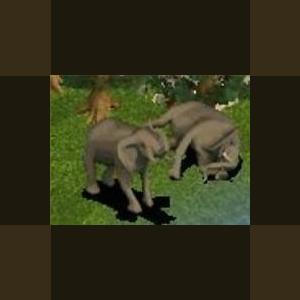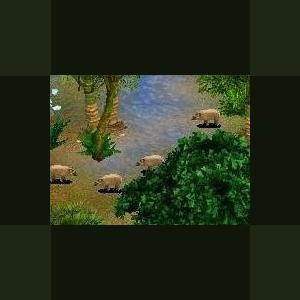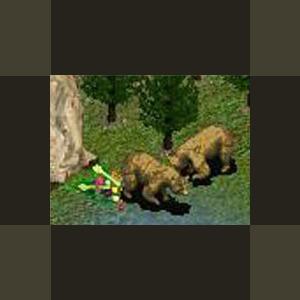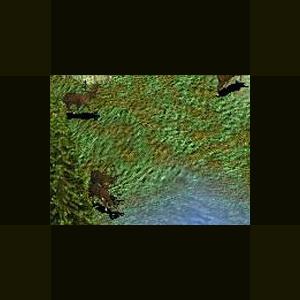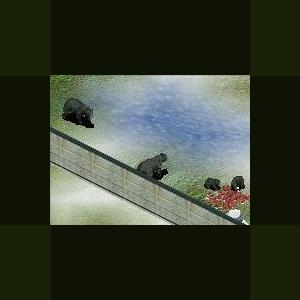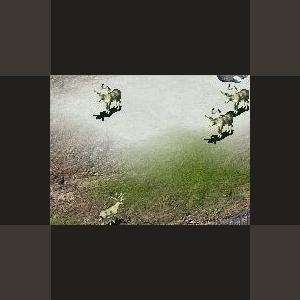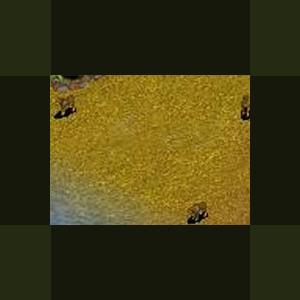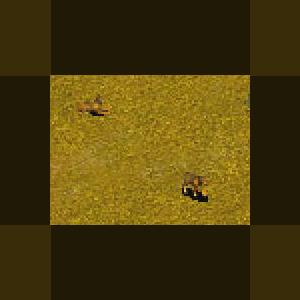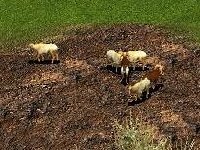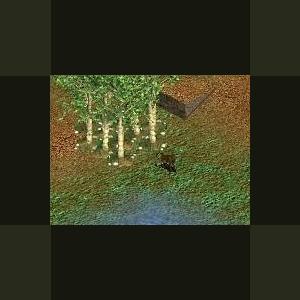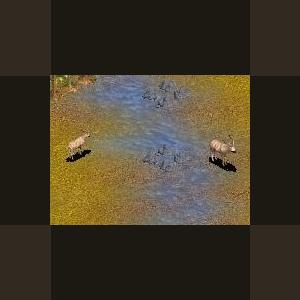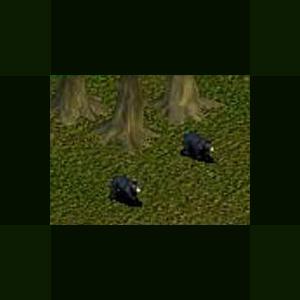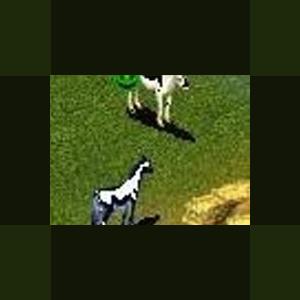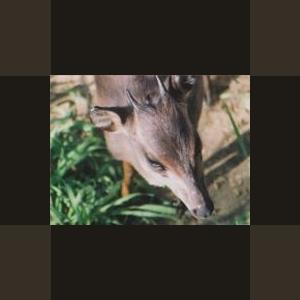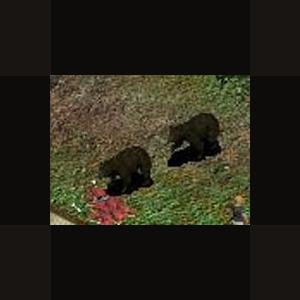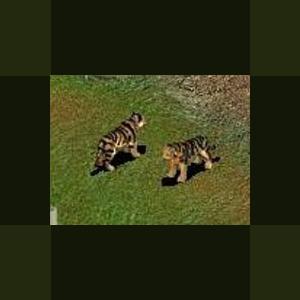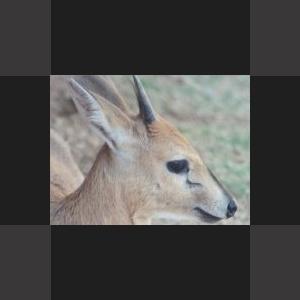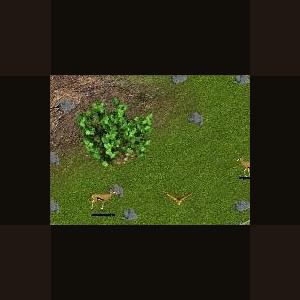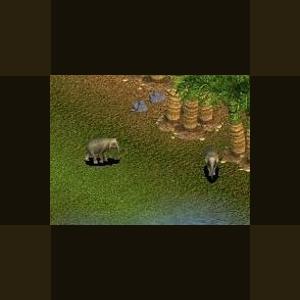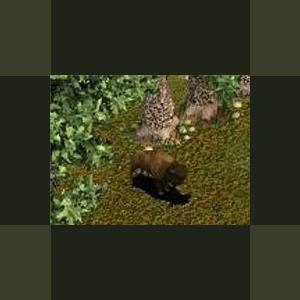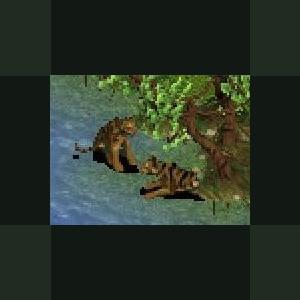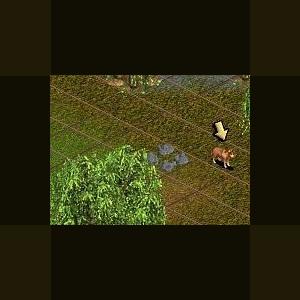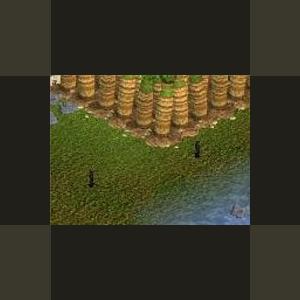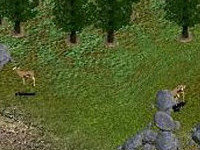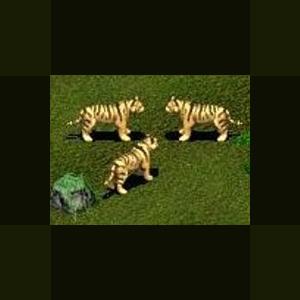279 files
-
North African Elephant by Ghirin
By Guest
North African Elephant
Author: Ghirin
http://www.zoo-tek.com/forums/index.php?download=626
The North African Elephant inhabited the area north of the Sahara Desert until about the 4th century A.D., when the animals were exterminated due to over hunting and loss of habitat. This is the elephant used by Hannibal during his attack on Rome. These elephants were also used by the Romans in the arena. These elephants are the same species as the Savannah Elephant, but adapted to the Mediterranean climate of northern Africa
Created by Ghirin 2003
Updated 2010-11-04
Just to save space with less in zip and smaller image.
Nothing new.
382 downloads
0 comments
Updated
-
Red River Hog by And 1
By Guest
made by And 1
The Red River Hog has a striking red fur. There is a vague, white line thats runs over the back. The animal has a blank face mask around the eyes, on the cheeks and on the jaws. The muzzle and the face are black. The hair on the jaw and the flanks is longer than on the rest of the fur.
The Red River Hog has length of 1 to 1.5 meter. The thin tail is 30 to 45 centimetres long. The boar is somewhat larger than the sow. Also, the male has recognizable humps/lumps on both sides of the muzzle and rather small, sharp battle cogs.
The Red River Hog is omnivorous. It eats mainly roots and turnips, and completes its diet with fruit, grasses, herbs and animal food such as eggs, dead animal and plant remains, insects, and lizards. To find the turnips, roots and insects, it tosses its large muzzle in the ground. In this way, Red River Hogs can cause much damage to agricultural plants.
The Red River Hog is mostly nocturnal. By day, they hide in dense bushes. After sunset, they roam around in troops, in search for food. The Red River Hog is a good swimmer but is unable to hold its breath for long.
They live in small troops of four up to twenty animals, comprising a male (boar), some adult sows and their piglets. The boar defends its harem aggressively against carnivores; the leopard is its most important enemy. Different troops merge sometimes and form groups of up to sixty animals.
Updated 2010-11-05
Just to save space with less in zip and smaller image.
Nothing new.
382 downloads
0 comments
Updated
-
Cave Bear by Ghirin
By Guest
The cave bear is an extinct species of bear from Europe. It lived during the Pleistocene era and became extinct approximately 10,000 years ago, at the end of the last glacial period. This animal's scientific name, Ursus spelaeus, is derived from the fact that many of the bear's skeletons have been found in caves. These bears seemed to have spent more time in caves, using them for hibernation, raising young, and dying in them.
Cave bears are similar to brown bears, but some notable differences are present. They were larger than current European brown bears (30%), had higher foreheads and were primarily vegetarian.
Mammoths, Sabertooths and Hominids by Agusti and Anton, 2002.
Created by Ghirin 2003
Updated 2010-10-30
Just to save space with less in zip and smaller image.
Nothing new.
381 downloads
0 comments
Updated
-
Woodland Caribou by Ghirin
By Guest
The woodland caribou (Rangifer tarandus caribou) is a distinct subspecies from the more numerous barren ground caribou. It lives in the boreal forests south of the tundra and is less likely to migrate over large distances. It is also darker in color than other subspecies of caribou.
Woodland caribou prefer mature coniferous forests as habitat. This type of forest produces adequate amounts of ground and tree lichen that the caribou depend upon for food. The ratio of lichen in the diet varies with the time of year: up to 70% of the winter diet may be composed of lichens while the summer diet may only be 25-30% lichen. The balance of the diet is composed of grasses and shrubs.
Created by Ghirin 2003
Updated 2010-11-11
Just to save space with less in zip and smaller image.
Nothing new.
381 downloads
0 comments
Updated
-
Arctic Glacier Bear by Ghirin
By Guest
Arctic Glacier Bear by Ghirin
The glacier bear is a rare color phase of the American black bear.
Glacier bears are various shades of blue-gray and are found in southeastern Alaska, northwestern British Columbia and the southwestern Yukon Territory. The undercoat of glacier bears is blue-black and the outer guard hairs are white with silver tips. The blue-gray color serves as camouflage against a backdrop of frozen ice.
By Ghirin 2008
Updated 2010-10-30
Just to save space with less in zip and smaller image.
Nothing new.
381 downloads
0 comments
Updated
-
Peary Caribou by Ghirin
By Guest
The Peary caribou (Rangifer tarandus pearyi) is the northernmost subspecies of caribou. It lives on the islands of the Canadian Arctic Archipelago and is the smallest subspecies of living caribou. The Peary caribou's coat changes color with the season. In the winter, the coat is white to blend with the snowy habitat. The summer coat is slate gray with white underparts.
The habitat of the Peary caribou is treeless. In the summer, the caribou forage in moist areas such as the slopes of river valleys and upland plains for grasses, sedges, and willows. The caribou forage in higher areas in the winter where the snow is thinner and easier to dig through.
Created by Ghirin 2003
Updated 2010-11-05
Just to save space with less in zip and smaller image.
Nothing new.
380 downloads
0 comments
Updated
-
North African Golden Jackal by Ghirin
By Guest
The golden jackal (Canis aureus) is widespread throughout northern Africa, central and southern Asia, and southern Europe. They prefer the more dry and arid portions of their ranges. The African golden jackal (Canis aureus algirensis) ranges across the northern portion of Africa and is the jackal represented by the Egyptian god Anubis.
Golden jackals live in small family groups composed of a mated pair and their offspring. Grown pups from previous years often stay with their parents for a time, helping to raise the younger members of the family. This extra help improves the survival rate of offspring.
The jackals dig dens or use ones made by other animals to serve as shelters for the family. Hunting usually takes place at night, but golden jackals are active during daylight hours in areas far from human activity. They prey on small mammals, birds, insects, and small reptiles. They will also feed on carrion and fruits.
References:
http://animaldiversity.ummz.umich.edu/accounts/canis/c._aureus$narrative.html
http://www.lioncrusher.com
http://www.bbc.co.uk/nature/wildfacts/factfiles/130.shtml
Walker’s Mammals of the World, Nowak, 1999.
Created by Ghirin 2003
Updated 2010-11-04
Just to save space with less in zip and smaller image.
Nothing new.
380 downloads
0 comments
Updated
-
Bengal Fox by Ghirin
By Guest
The Bengal fox (Vulpes bengalensis), also known as the Indian fox, is the common fox of the Indian subcontinent. This fox is medium-sized and is a distinctive buff to sandy orange color. It lives in semi-arid regions, open grasslands, and lightly forested areas. The fox has been reported at elevations up to 1350 meters.
Even though Bengal foxes live in monogamous pairs, each fox hunts alone. The usual prey items include small mammals, ground nesting birds, and insects. They will also eat fruits in season.
Bengal foxes dig two types of dens: simple short ones for brief periods of rest and complex, cavernous ones with many entrances.
*Inspired by the Zoo Tycoon Brains Trust(http://www.geocities.com/professorpaul1/home.html)
Created by Ghirin 2003
Updated 2010-10-30
Just to save space with less in zip and smaller image.
379 downloads
0 comments
Updated
-
Audubon's Bighorn by Ghirin
By Guest
Audubon's Bighorn by Ghirin
Audubon's bighorn sheep (Ovis canadensis auduboni), also known as the Badlands bighorn sheep, was the most easterly population of bighorn sheep. This bighorn sheep was more adapted to living in the lowlands than the other subspecies, often grazing on the open prairie and retreating to the nearby rock formations when threatened.
As the open prairie became cultivated, the Badlands bighorn became isolated on the rock formations and was eventually hunted to extinction. The last sighting was in the 1920s.
Reference:
The Doomsday Book of Animals. Day, 1981.
Ghirin 2004
Updated 2010-10-30
Just to save space with less in zip and smaller image.
Nothing new.
Updated August 18, 2018 by Cricket so that screenshot would show up again.
379 downloads
0 comments
Updated
-
Arunachal Macaque by Ghirin
By Guest
Arunachal Macaque by Ghirin
Arunachal macaques live at high elevations in the eastern Himalayas.
The Arunachal macaque (Macaca munzala) is the most recent primate to be described by science. It is native to the Arunachal Pradesh region of India in the eastern Himalayan region. This macaque prefers living in the deep forest, but will come out to raid crops.
*Inspired by the Zoo Tycoon Brains Trust at the Zoo Tek Forums.
Reference: http://www.ncf-india.org/
http://news.bbc.co.uk/1/hi/sci/tech/4101001.stm
Created by Ghirin 2005
Updated 2010-10-30
Just to save space with less in zip and smaller image.
Nothing new.
377 downloads
0 comments
Updated
-
Lechwe by Jordan
By Guest
The lechwe is an antelope that lives on the floodplains of Africa
Updated 2010-11-03
Just to save space with less in zip and smaller image.
Nothing new.
375 downloads
0 comments
Updated
-
Sun Bear by Ghirin
By Guest
Sun Bear
Author: Ghirin
The sun bear (Ursus malayanus, Helarctos malayanus) is the smallest species of living bear. It is native to the forests of Southeast Asia, including China, Thailand, Malaysia, Indonesia, and Vietnam. These bears are excellent climbers and spend the day sleeping and sunbathing in trees; they hunt at night.
Sun bears have black fur with a characteristic light-colored mark on the chest. The soles of their feet are free of fur to help in climbiing and they have large, curved claws for climbing, openning insect nests, and defense. These bears also use their long canine teeth to tear open trees to get at the insects hidden inside.
Sun bears eat a wide variety of foods, including insects, friut, honey, eggs, and small vertebrates.
They are solitary animals, with the only regular social group being that of mother and cubs.
Created by Ghirin 2003
Updated 2010-11-06
Just to save space with less in zip and smaller image.
Nothing new.
373 downloads
0 comments
Updated
-
Painted Horse by Sundance
By Guest
Painted Horse by Sundance
What's the difference between a pinto horse and a paint horse? Nothing. Although Paint usually is used to describe a registered pinto horse of Quarterhorse and/or Thoroughbred horse breeding, Pinto markings can be found in about any breed.
The British use the terms skewbald and piebald to describe pintos. A skewbald horse is a horse of any other color than black with white spots, while the piebald is a black horse with white spots. Genetically, there are four major paint patterns, the overo, the tobiano, and the much neglected sabino and splash white.
works with zt, dd, mm and cc
Updated 2010-11-05
Just to save space with less in zip and smaller image.
Nothing new.
371 downloads
0 comments
Updated
-
Blue Duiker by Jordan
By Guest
Body Length: 50-75 cm / 1.6-2.5 ft.
Shoulder Height: 30-40 cm / 12-16 in.
Tail Length: 7-10 cm / 3-4 in.
Weight: 3.8-5.4 kg / 8.4-12 lb.
Females are generally larger than males in this duiker species. The colour of the coat varies with the region from slate grey to grey-brown, with a bluish sheen on the back. The underparts, inner legs, rump, and underside of the tail are whitish. There is a light eye-brow ridge which curves up to the base of the horns, as well as a glandular slit underneath the eye. The horns are strongly ridged and short, growing 2-10 cm / 0.8-4 inches long. The horns are sometimes absent in females, or hidden by the short head crest.
Gestation Period: 7.5 months.
Young per Birth: 1, rarely twins.
Weaning: By 5 months.
Sexual Maturity: Females at 9-12 months, males at 12-18 months.
Life span: 10-12 years.
Kids lie concealed away from the mother for 2-3 months. At this point their coat changes from reddish brown to the grey-blue colour of adults.
The blue duiker is mostly active at night and at dawn and dusk. Bonded pairs patrol their territory, which are 2.5-4 hectares in size, regularly marking them with scent clues from their pedal glands (situated between the hooves), facial glands, and from defecating. Both sexes chase off any intruders, but will remain tolerant of their own young until they reach 18 months of age. The mother and young contact through soft groaning calls, both freezing at the slightest alarm. Males may emit a whistle or a sneezing sound to raise the alarm. Population densities of up to78 per square kilometer have been recorded in Gabon.
Family group: Solitary or in mating pairs.
Diet: Leaves, buds, shoots, grasses, fruit, insects, eggs.
Created by Jordan, Zoo Tek Designer, 2005.
*Inspired by the Zoo Tek Nature Encyclopedia. (www.zoo-tek.com)
Updated 2010-10-30
Just to save space with less in zip and smaller image.
370 downloads
0 comments
Updated
-
Atlas Bear by Ghirin
By Guest
Atlas Bear by Ghirin
The Atlas bear was the only species of modern bear to live in Africa. It was native to the forests of North Africa and was thought to be a sub-species of the brown bear (Ursus arctos crowtheri). The Atlas bear was smaller than most brown bears and closer in size to the North American black bear.
The Atlas bear was believed to be the Libyan bear mentioned by ancient writers and may also have been the Numidian bear used for arena games by the ancient Romans.
The bear's former habitat was the dry forest of North Africa. Most of the North African forest has been cut and this was thought to be the major cause of the bear's extinction. A small population of bears survived in the Atlas Mountains until the 1800s. At that time, the increase in the number of firearms in North Africa led to over-hunting and final extinction of the Atlas bear. The Atlas bear prefers a mixture of coniferous and deciduous forest with some elevation. Source of information and plaque illustration: The Doomsdat Book of Animals by David Day, 1981.
Created by Ghirin, 2003
Updated 2010-10-30
Just to save space with less in zip and smaller image.
Nothing new.
369 downloads
0 comments
Updated
-
Trinil Tiger by Moondawg
By Guest
Trinil Tiger
The Trinil Tiger (Panthera tigris trinilensis) is a fossil tiger dating from about 1.2 million years ago. This tiger was found at the locality of Trinil, Java, Indonesia. These fossils are now stored in the Dubois Collection of the National Museum of Natural History in Leiden, the Netherlands. Although these fossils have been found on Java, the Trinil tiger is probably not a direct ancestor of the Javan tiger. The Trinil Tiger probably became extinct fifty thousand years ago.
Updated 2010-11-11
Just to save space with less in zip and smaller image.
Nothing new.
369 downloads
0 comments
Updated
-
Common Duiker by Jordan
By Guest
Body Length: 80-115 cm / 2.6-3.8 ft.
Shoulder Height: 45-60 cm / 1.5-2 ft.
Tail Length: 10-20 cm / 4-8 in.
Weight: 10-20 kg / 22-44 lb.
The coat is generally pale reddish-brown to grizzled gray, depending on the geographical location. The undersides are whitish, while the muzzle, nose bridge, and forelegs are black. The short tail is black on the top, contrasting sharply with the fluffy white underside. The long, pointed ears are separated by a tuft of hair on the forehead. Females are usually larger than males. The sharply pointed horns are usually found only in males and grow 7-18 cm / 3-7 inches long. The horns are more vertically oriented than in other duiker species, due to the more open habitat.
Gestation Period: 6-7 months.
Young per Birth: 1
Weaning: 2 months.
Sexual Maturity: Females at 8-10 months, males at 12 months.
Life span: Up to 14 years.
After birth, the young lie up in dense cover for a number of weeks.
Feeding predominantly from dusk until dawn, the gray duiker rests in favourite hiding places in scrub or grass during the day. This small antelope has exceptional speed and stamina, and is usually able to outrun dogs that chase after it. The home ranges of individuals of the same sex rarely overlap. However, there is substantial common land in the ranges of individuals of the opposite sexes. Males are territorial, marking their defended areas with preorbital secretions and attacking other males that intrude. The favourite resting place of these males is a high spot overlooking their territory. In favourable areas there are approximately 2 animals per square kilometer. Juveniles make a loud bleat if caught, which brings the parents running.
Family group: Usually solitary, although pairs are occasionally sighted.
Diet: Tree and bush foliage, fruits, seeds, occasionally carrion.
Created by Jordan, Zoo Tek Designer, 2005
Inspired by the Zoo Tycoon Brains Trust at Zoo Tek
Updated 2010-10-30
Just to save space with less in zip and smaller image.
Nothing new.
368 downloads
0 comments
Updated
-
Pronghorn by Coolperson5
By Guest
Pronghorn by Coolperson5
The Pronghorn is an antelope-like creature of North America. It is a preview for my Grassland Pack
Updated 2010-11-05
Just to save space with less in zip and smaller image.
Nothing new.
368 downloads
0 comments
Updated
-
Sumatran Elephant by Jordan
By Guest
Sumatran elephants are the smallest of the Asian elephants. Males rarely develop long tusks, while those of adult females may be so short that they are hidden by the upper lip. This elephant can live up to 70 years in captivity, less in the wild.
The endangered Sumatran elephant (Elephas maximus sumatranus) is the smallest (and perhaps oldest) of the Asian subspecies and is unique to the island of Sumatra. It has been protected in Indonesia since 1931. Population surveys conducted in the 1980’s estimated that only 2800 – 4500 wild elephants remained. It is likely that even fewer survive in today’s fragmented forests. The term "pocket elephants" was originally coined to refer to their diminutive size, and also reflects their survival today in the few remaining "pockets" of lowland rainforest.
The combined effects of road development, logging, conversion of forest to agriculture, and human resettlement have contributed to the loss of thousands of hectares of elephant habitat. As habitat shrinks, elephants are forced into conflict with humans. The destruction of crops and houses results in injuries and deaths of both humans and elephants.
Villagers faced with raiding elephants demanded that the government resolve the problem. To these villagers, the elephants were just dangerous crop-raiding pests. Occasionally, angry villagers have poisoned elephants. Unlike other Asian countries, with strong elephant traditions, elephants are not revered in Indonesia.
The government of Indonesia began establishing Elephant Centers on Sumatra in 1986 in an attempt to relieve human-elephant conflicts. Today there are six Centers that hold approximately 400 elephants.
Updated 2010-11-06
Just to save space with less in zip and smaller image.
Nothing new.
366 downloads
0 comments
Updated
-
Wisent by Ghirin
By Guest
Wisent by Ghirin
The wisent (Bison bonasus) is the Old World member of the bison family. This bison is the largest land animal in Europe and is a forest dweller, unlike the plains bison of North America.
Reference:
www.wikipedia.org
Updated 2010-11-11
Just to save space with less in zip and smaller image.
Nothing new.
364 downloads
0 comments
Updated
-
Tigon by Ghirin
By Guest
Tigons are one of several big cat hybrids. For tigons, the male parent is a tiger and the female parent is a lioness. Tigons often have a combination of light stripes (from the father) and spots (from the mother) and the ground color is often a rich golden brown. Unlike ligers (lion/tigress crosses), tigons rarely exceed the size of either parent and males are often the size of a large female tiger.
Tigons are much rarer than ligers because it is harder to breed male tigers to lionesses. Male tigons are believed to be sterile; however, female tigons have produced cubs when bred to a male lion or tiger. The resulting offspring are either three quarters lion or tiger and usually strongly resemble the male parent. Such animals are called li-tigons or ti-tigons.
Tigons have behavior traits of both lions and tigers and often make sounds characteristic of both parent species.
Even though no wild tigons or ligers have been documented, there are local legends of animals resembling them in parts of India.
Reference:
http://www.lairweb.org.nz/tiger/tigons.html
Created by Ghirin 2003
Updated 2010-11-11
Just to save space with less in zip and smaller image.
Nothing new.
364 downloads
0 comments
Updated
-
Red Wolf by Coolperson5
By Guest
Red Wolf by Coolperson5
The Red Wolf (Canis Rufus) is a critically endangered member of the dog family. It lives in the South-eastern United States.Created by Coolperson5.
Updated 2010-11-05
Just to save space with less in zip and smaller image.
Nothing new.
364 downloads
0 comments
Updated
-
Black Giant Squirrel by Jordan
By Guest
The Black Giant Squirrel is a member of the Sciuridae family that lives alone or in pairs in Southeast Asia.
Updated 2010-10-30
Just to save space with less in zip and smaller image.
363 downloads
0 comments
Updated
-
Cuvier's Gazelle by Ghirin
By Guest
Cuvier's gazelle (Gazella cuvieri) is native to North Africa and is the only antelope that is currently endemic to the area north of the Sahara Desert. At one time, Cuvier's gazelle was widespread in the Atlas Mountains of North Africa and was also called the Atlas or Edmi gazelle. Currently, its range has been markedly reduced by hunting to scattered populations in the highlands of Algeria, Morocco and Tunisia.
Cuvier's gazelle can be found in highland oak and pine forests, mountain meadows, and even desert plateaus. It will feed on both grass and shrubs, depending on the season. The gazelle prefers to stay in the hills during the day, and will descend into the valleys at dawn and dusk to feed. It needs water from waterholes in addition to dew and plant moisture to survive.
Created by Ghirin 2003
Updated 2010-10-30
Just to save space with less in zip and smaller image.
Nothing new.
Updated August 18, 2018 by Cricket so that screenshot would show up again.
362 downloads
0 comments
Updated
-
Sumatran Tiger by Moondawg
By Guest
Sumatran Tiger
The Sumatran tiger (Panthera tigris sumatrae) is a subspecies of tiger found on the Indonesian island of Sumatra. The wild population is estimated at between 400 and 500 animals, occurring predominantly in the island's national parks. Recent genetic testing has revealed the presence of unique genetic markers, indicating that it may develop into a separate species, if it is not made extinct. This has led to suggestions that the Sumatran tiger should have greater priority for conservation than any other subspecies. Habitat destruction is the main threat to the existing tiger population (logging continues even in the supposedly protected national parks), but 66 tigers were recorded as being shot and killed between 1998 and 2000—nearly 20% of the total population.
The Sumatran tiger is the smallest of all extant tiger subspecies. Male Sumatran tigers average 234 cm (7 feet, 8 inches) in length from head to tail and weigh about 136 kg (300 pounds). Females average 198 cm (6 feet, 6 inches) in length and weigh about 91 kg (200 pounds). Its stripes are narrower than other subspecies of tigers' stripes, and it has a more bearded and maned appearance, especially the males. Its small size makes it easier to move through dense rain forests. It has webbing between its toes that, when spread, makes Sumatran tigers very fast swimmers. It has been known to drive hoofed prey into the water, especially if the prey animal is a slow swimmer.
Sumatran Tigers commonly prey on larger ungulates, like wild boar, tapir and deer, and sometimes also smaller animals, like fowl, and fish. Orangutans could be prey, but since they spend a minimal amount of time on the ground, tigers rarely catch one.
Analysis of DNA is consistent with the hypothesis that the Sumatran tigers have been isolated after a rise in sea level at the Pleistocene to Holocene border about 12.000-6.000 years ago from other tiger populations. In agreement with this evolutionary history, the Sumatran tiger is genetically isolated from all living mainland tigers, which form a distinct group, closely related among each other.
The Sumatran tiger is only found naturally in Sumatra, a large island in western Indonesia. It lives anywhere from lowland forests to mountain forest and inhabits many unprotected areas. Only about 400 live in game reserves and national parks, The largest population of about 110 tigers lives in Gunung Leuser National Park. Another 100 live in unprotected areas that will soon be lost and the rest are spread out in areas that are quickly being lost to agriculture. The reserves are not safe because, despite conservation efforts, many tigers are killed by poachers each year.The Sumatran tiger is found only on the Indonesian island of Sumatra in habitat that ranges from lowland forest to sub mountain and mountain forest including some peat moss forests. According the the Tiger Information Center and the World Wildlife Fund there are no more than 500 of these tigers left in the wild with some estimates considerably lower.
The continuing loss of habitat is intensifying the crises to save this tiger.
In 2007, the Indonesian Forestry Ministry and Safari Park established cooperation with the Australia Zoo for the conservation of Sumatran tigers and other endangered species. The cooperation agreement was marked by the signing of a Letter of Intent on 'Sumatran tiger and other Endangered Species Conservation Program and the Establishment of a Sister Zo Relationship between Taman Safari and Australia Zoo' at the Indonesian Forestry Ministry office on July 31, 2007. The program includes conserving Sumatran tigers and other endangered species in the wild, efforts to reduce conflicts between tigers and humans, and rehabilitating Sumatran tigers and reintroducing them to their natural habitat.
Updated 2010-11-06
Just to save space with less in zip and smaller image.
Nothing new.
359 downloads
0 comments
Updated

